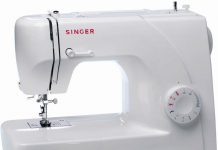Prepping for your projects is probably the most boring part of sewing but unfortunately, it’s something that has to be done. Prepping paves the way for a frustration-free time ahead and also ensures a perfect end product. So, no matter how boring or tedious you find it, prep you must.
Pre-Shrink Your Fabric
While stopping to preshrink your fabric may keep you from getting started with your project, it is crucial. Some types of fabric including pure cottons, linens and jute, tend to shrink (some fabrics shrink a lot) after the first wash.
Skipping this step, especially when you are sewing a garment, could mean that you will get to use the item only once or twice. With just one wash the fabric will shrink and you will find that it does not fit you any more. That can be frustrating and a real waste of time.
If by any chance you skip this step, you cannot make up for it by attempting to shrink the fabric after sewing. The fabric will shrink but the stitches will not and that will lead to puckered seams and other lopsided results.
Steps for Preshrinking
Fortunately, preshrinking is easy. The biggest problem is that trying to contain your impatience as you wait to get started.
The first thing you need to do is to serge the raw ends of the fabric to prevent it from fraying. If you do not have a serger machine, simply zigzagging the raw ends will work as well.
After you’ve zigzagged the raw ends, soak the fabric in room temperature water for a couple of hours and then launder it in the washing machine just as you would launder the finished item. Let it go through the whole process including the spin drying.
When the fabric is dry, iron it out and you are ready to start.
Test Your Stitch Before You Sew
As you become more experienced you may skip this step if you are switching between two projects using the same type of fabric. However, if you are switching between projects using completely different types of fabric, this step can be invaluable.
For example, heavy weight fabrics will require completely different settings as compared to sheers and other lightweight fabrics. You will also need to use different sized needles as well as a different thread size. Test sewing will ensure that you have the right setting for the perfect stitch for that particular fabric. It may seem like a waste of time but it is in fact the ultimate time saver.
All you need to do is cut out a small scrap of the fabric that you are working on and sew a few stitches with a contrast color so the stitches are easily visible. Check both sides of the fabric and make sure there are no loose stitches, no loops and no bunching. Keep adjusting the tension and stitch length and test sew till you are happy with the results.
You are now all ready to get started!
Tip for today







